Did you know that there are over 150 different types of green beans? That’s right! Whether you’re a seasoned gardener or just starting out, the world of green bean varieties is vast and exciting. From classic snap beans to stringless snaps, filet cultivars to long podded beans, and even yellow and purple podded options, there’s a green bean out there for everyone. In this article, I’ll take you on a journey through the diverse and delicious world of green bean varieties, providing you with all the information you need to choose the perfect ones for your garden.
- Green beans come in a wide variety of types with different tastes and textures.
- Classic snap and stringless snaps are popular choices for traditional green bean flavor.
- Filet beans offer a slim and tender option for side dishes.
- Long podded beans provide a unique twist with their elongated pods.
- Yellow and purple podded beans add vibrant colors to your garden and meals.
Classic Snap Cultivars
Classic snap beans are a favorite among gardeners who appreciate the traditional green bean taste and texture. These classic green bean varieties offer a nostalgic flavor that reminds us of home-cooked meals and backyard picnics. When it comes to classic snap cultivars, there are some popular choices that gardeners rely on for their exceptional qualities.
One such cultivar is Harvester, known for its abundant yields and disease resistance. It consistently produces a bountiful harvest, making it a reliable choice for gardeners of all skill levels. With its tender, flavorful pods, Harvester is a classic snap bean variety that never disappoints.
Porch Pick is another classic snap bean cultivar that gardeners love. It gets its name from its suitability for growing in containers on the porch or patio. Porch Pick is compact and self-supporting, making it a convenient choice for urban gardeners or those with limited space. Despite its compact size, this variety offers an impressive yield of delicious snap beans.
Prevail is a classic snap bean variety that lives up to its name. It is known for its resilience and vigor, making it a top choice for gardeners looking for a hardy and productive cultivar. Prevail can withstand various weather conditions and pests, ensuring a successful harvest even in challenging environments.
Tendergreen is a classic snap bean variety that lives up to its name with its tender and succulent pods. This cultivar offers a delicate flavor and a satisfying crunch, making it a favorite among green bean enthusiasts. Whether used as a side dish or added to soups and stir-fries, Tendergreen adds a burst of freshness to any meal.
These classic snap cultivars are valued for their high yields, disease resistance, and ease of picking. Whether you grow them in the ground or in containers, they are suitable for various climates and can thrive in different growing conditions. With their traditional green bean taste and texture, they bring a sense of nostalgia to your garden and dinner table.
Stringless Snaps
For those who prefer stringless varieties, there are several options available. Landreth Stringless, Strike, and Tenderette are some popular choices. These stringless snap beans offer the same great taste and texture as classic snap beans but without the hassle of removing strings.
Stringless snap beans are also heat tolerant and resistant to mosaic virus, making them a reliable and low-maintenance addition to your garden. Whether you’re a seasoned gardener or a beginner, these stringless varieties are a convenient and delicious option for your green bean harvest.
Varieties of Stringless Snap Beans
| Variety | Description |
|---|---|
| Landreth Stringless | A classic stringless snap bean with a robust flavor and tender texture. It produces high yields and is resistant to diseases. |
| Strike | A stringless snap bean known for its extra-long pods and exceptional taste. It is heat resistant and thrives in various growing conditions. |
| Tenderette | A popular stringless variety that is known for its tender and flavorful pods. It has a bushy growth habit, making it suitable for smaller gardens or containers. |
Filet Cultivars
Filet beans, also known as haricot verts or French filet beans, are slim and tender beans that are typically eaten whole. They make excellent side dishes and are prized for their delicate flavor.
Two popular filet cultivars are:
- Beananza
- Desperado
Beananza and Desperado are known for their abundant production and dark green pods. These beans are perfect for container gardening.
Beananza
Beananza is a highly productive filet cultivar. It produces numerous long and slender pods that are a rich, dark green. The beans have a tender texture and a mild, nutty flavor. They are perfect for steaming, sautéing, or adding to salads.
Desperado
Desperado filet beans are known for their exceptional flavor and productivity. They have long, slender, and vibrant green pods that are tender and sweet. Desperado beans can be enjoyed raw in salads, lightly steamed, or stir-fried.
Long Podded Cultivars
If you prefer longer beans, there are several long podded cultivars to choose from. Big Kahuna, Jade, Kentucky Wonder 125, Heavyweight II, and Top Crop are known for their elongated pods and high yields. These varieties are suitable for those who enjoy longer beans in their dishes or want to try something different.
Long Podded Cultivar Comparison Table
| Variety | Pod Length | Yield | Growing Conditions |
|---|---|---|---|
| Big Kahuna | 8-10 inches | High | Full sun, well-drained soil |
| Jade | 7-9 inches | High | Full sun, well-drained soil |
| Kentucky Wonder 125 | 9-11 inches | High | Full sun, well-drained soil |
| Heavyweight II | 8-10 inches | High | Full sun, well-drained soil |
| Top Crop | 7-9 inches | High | Full sun, well-drained soil |
These long podded green bean varieties offer not only impressive pod length but also exceptional yields. They thrive in full sun and well-drained soil, making them perfect for home gardens. Whether you’re looking to enhance the visual appeal of your dishes or simply want to try something new, these long bean varieties are sure to delight your taste buds.
Yellow Podded Cultivars
For a pop of color in your garden, consider growing yellow podded green beans. Some popular choices for yellow podded bean varieties are Cherokee Wax, Gold Mine, Gold Rush Wax, Golden Wax, and Pencil Pod Wax. These vibrant cultivars produce bright yellow pods that add a visual appeal to your garden.
Yellow podded beans can be used in the same way as green beans, making them versatile for a variety of culinary dishes. Their vibrant color adds a touch of brightness to your meals, making them visually appealing and appetizing.
“The vibrant yellow color of these beans not only makes them visually appealing, but it also adds a unique twist to your favorite green bean recipes.”
| Yellow Podded Bean Varieties | Description |
|---|---|
| Cherokee Wax | Produces long, straight, and tender pods with a buttery flavor. |
| Gold Mine | Yields high-quality, golden-yellow pods that are stringless and tender. |
| Gold Rush Wax | Produces smooth, golden-yellow pods with a sweet, mild flavor. |
| Golden Wax | Produces flat, golden pods that are stringless, tender, and flavorful. |
| Pencil Pod Wax | Yields long, slender pods that are easy to harvest and have a sweet flavor. |
Purple Podded Cultivars
Purple podded green beans add a unique touch to your garden and dinner plate. Amethyst, Purple Queen, Purple Teepee, Royal Burgundy, and Velour are some popular purple podded cultivars. These beans turn green when cooked but retain their vibrant purple color when eaten raw. They offer the same taste and nutritional benefits as green beans, with an added visual appeal.
If you’re looking to add a splash of color to your dishes, purple podded beans are the perfect choice. Not only do they provide a striking contrast to other ingredients, but they also retain their beautiful purple hue when lightly cooked or added raw to salads and stir-fries.
Amethyst
Amethyst is a variety of purple podded bean that boasts stunning deep purple pods. These beans are stringless and tender when young, making them a joy to eat. With their rich earthy flavor, Amethyst beans are a great addition to any dish.
Purple Queen
Purple Queen beans are known for their long, slim pods and vibrant purple color. They have a delightful crisp texture and a slightly nutty taste. These beans are excellent for sautéing, steaming, or adding to salads for a pop of color.
Purple Teepee
Purple Teepee beans are compact bush beans with dark purple pods. They are quick to mature and produce an abundance of beans. The pods are best when harvested young and tender, and they offer a mild flavor that complements a variety of dishes.
Royal Burgundy
Royal Burgundy beans are known for their deep purple pods and dark green foliage. The beans are stringless and tender, with a sweet flavor that intensifies when cooked. Their rich color makes them a visually stunning addition to any plate.
Velour
Velour beans feature velvety, purple pods that are both attractive and delicious. These beans are stringless and have a tender texture. When cooked, they develop a rich, mellow flavor that pairs well with a wide range of ingredients.
Romano Varieties
When it comes to green beans, Romano varieties offer a unique twist that can elevate your culinary creations. Also known as Italian flat beans, Romano beans have a wider and flatter shape compared to traditional green beans. But it’s their distinctive flavor and meaty texture that really sets them apart.
Here are some popular Romano green bean varieties that you can consider growing in your garden:
- Dragon’s Tongue: This Romano bean variety features beautiful purple streaks on its pale-green pods. It has a sweet and nutty flavor, making it a versatile ingredient for various dishes.
- Early Bush Italian: As the name suggests, this Romano bean variety matures early, allowing you to enjoy its tender pods sooner. It has a rich flavor and is excellent for grilling or sautéing.
- Green Crop: Known for its abundant yields, Green Crop Romano beans are tender and flavorful. They are perfect for canning, freezing, or simply enjoying fresh.
- Jumbo: If you prefer larger beans, Jumbo Romano beans are an excellent choice. With their thick, succulent pods, they are great for roasting or stir-frying.
- Roma II: This Romano bean variety produces long, flat pods that are perfect for Italian-inspired dishes. They have a rich, buttery flavor and are delicious when steamed or braised.
Whether you grill them, roast them, or sauté them, Romano beans add a delicious twist to any dish. Their unique flavor and meaty texture make them a delightful addition to salads, stir-fries, pasta dishes, and more.
And now, let’s take a moment to appreciate the beauty of these Romano beans:
With their vibrant green color and elongated shape, Romano beans certainly stand out in the garden. Their distinct flavor and versatility make them a popular choice among gardeners and chefs alike. So why not consider adding some Romano varieties to your garden this season and enjoy the delicious bounty they have to offer?
Growing and Care Tips
Green beans are relatively easy to grow and provide a bountiful harvest with proper care. To ensure successful cultivation, consider the following tips:
1. Sun and Soil Requirements
Green beans thrive in full sun, so choose a location in your garden that receives at least 6-8 hours of direct sunlight daily. The soil should be fertile and well-drained to prevent waterlogging, which can lead to root rot. Prepare the soil by incorporating organic matter, such as compost or well-rotted manure, to enhance its nutrient content.
2. Planting Time and Spacing
Wait until the danger of frost has passed and the soil has warmed up before planting green beans. Bush beans should be spaced 18-24 inches apart, allowing enough room for the plants to grow and spread. If you are growing pole beans, provide a trellis, stake, or other support for them to climb.
3. Watering and Disease Prevention
Regular watering is crucial for green bean plants, especially during dry spells. Aim to keep the soil evenly moist, but avoid wetting the foliage excessively, as this can promote the development of fungal diseases. Mulching around the plants with organic materials, such as straw or wood chips, can help conserve moisture, regulate soil temperature, and reduce the need for frequent watering.
4. Weeding and Mulching
To minimize weed competition and conserve moisture, apply a layer of organic mulch around the base of the green bean plants. This mulch will suppress weed growth and prevent the soil from drying out quickly. Regularly remove any weeds that manage to emerge, as they can compete with your green beans for nutrients and water.
5. Harvesting Time
Green beans are ready to harvest when the pods are plump and full, but before the seeds inside have matured and become visible. Snap off the pods gently by hand or use garden scissors to avoid damaging the plant. Harvesting regularly will encourage the production of new pods and prolong your green bean harvest.
6. Troubleshooting Pest and Disease Issues
While green beans are generally resilient, they can still be susceptible to certain pests and diseases. Keep an eye out for common pests such as aphids, Mexican bean beetles, and leafhoppers. Handpicking these pests or using organic insecticides can help control infestations. Additionally, practicing crop rotation and providing good air circulation can minimize the risk of diseases such as bacterial blights, bean common mosaic virus, and white mold.
Adhering to these care tips will help ensure a successful green bean harvest while maintaining the health and vigor of your plants.
| Pest | Control |
|---|---|
| Aphids | Handpick or use a strong stream of water to dislodge aphids from plants. Neem oil or insecticidal soap can also be used. |
| Mexican Bean Beetles | Handpick beetles and eggs off plants. Applying floating row covers or using natural predators, such as ladybugs, can help control infestations. |
| Leafhoppers | Remove weeds near the garden as they can serve as alternate hosts for leafhoppers. Applying organic insecticides can also help control infestations. |
| Bacterial Blights | Practice crop rotation to prevent the buildup of bacteria in the soil. Remove and dispose of infected plants to prevent the spread of the disease. |
| Bean Common Mosaic Virus | Plant virus-resistant green bean varieties. Remove and destroy infected plants to prevent the spread of the virus. |
| White Mold | Ensure proper spacing between plants for good air circulation. Avoid overhead watering to prevent excessive moisture on the foliage. |
Pest and Disease Management
Green beans are susceptible to various pests and diseases that can hinder their growth and reduce yield. Understanding these common problems and implementing effective pest control and disease management techniques is crucial for a successful bean harvest.
Bean Pests
Bean pests can cause significant damage to green bean plants if left unchecked. Here are some common bean pests and strategies to control them:
- Mexican Bean Beetles: These beetles feed on bean foliage, causing defoliation and stunted growth. Handpicking adult beetles and their orange-yellow eggs can help control the infestation. Neem oil or insecticidal soap can be applied to control severe infestations.
- Aphids: Aphids are small, soft-bodied insects that feed on plant sap, causing curling and yellowing of leaves. A forceful stream of water can be used to dislodge them from the plants. Ladybugs and lacewings are beneficial insects that prey on aphids and can be introduced to the garden as natural predators.
- Leafhoppers: Leafhoppers are small, winged insects that suck sap from the leaves, causing yellowing and stippling. Yellow sticky traps can be placed near the plants to trap adult leafhoppers. Removing weeds that serve as alternate hosts can also help reduce their population.
- Seedcorn Maggots: Seedcorn maggots are tiny white larvae that feed on germinating bean seeds, leading to poor seedling emergence. To prevent infestation, avoid planting beans in areas where organic matter or heavy manure has been recently incorporated into the soil.
Implementing integrated pest management practices, such as crop rotation, companion planting, and regular monitoring, can also help prevent and control bean pest infestations.
Bean Diseases
Green beans are susceptible to various diseases that can impact plant health and yield. Here are some common bean diseases and preventative measures to consider:
- Bacterial Blights: Bacterial blights, caused by Xanthomonas and Pseudomonas bacteria, can cause wilting, leaf spots, and blighting of stems. To minimize disease spread, avoid overhead watering and ensure good air circulation around plants. Copper-based fungicides can be used for management.
- Bean Common Mosaic Virus (BCMV): BCMV is a viral disease that causes stunted growth, yellowing of leaves, and mosaic patterns on foliage. Planting virus-resistant bean varieties is the most effective way to prevent infection. Ensure proper weed control, as some weeds can serve as virus hosts.
- White Mold: White mold, caused by the Sclerotinia fungus, can lead to rotting of stems and pods, accompanied by a white cottony growth. To prevent infection, provide adequate spacing between plants for good air circulation. Avoid overhead irrigation and remove dead plant material promptly.
Proper watering practices, such as watering at the base of plants, applying mulch to prevent soil splashing, and providing appropriate drainage, can help minimize the risk of fungal diseases.
| Pests | Diseases |
|---|---|
| Mexican Bean Beetles | Bacterial Blights |
| Aphids | Bean Common Mosaic Virus (BCMV) |
| Leafhoppers | White Mold |
| Seedcorn Maggots |
Effective pest and disease management requires a combination of preventative measures, cultural practices, and, if necessary, targeted intervention using organic or conventional treatments. Regular monitoring and prompt action can help ensure healthy, productive green bean plants.
Conclusion
Growing green beans in your garden can be a rewarding and enjoyable endeavor. With such a wide variety of cultivars available, there is sure to be a type of green bean that suits your personal taste and specific garden conditions.
Whether you prefer the classic snap beans with their traditional taste and texture, or the convenience of stringless varieties, there are options for every preference. If you’re looking for a more delicate flavor, filet beans are a great choice. For those who enjoy longer beans, there are the long podded cultivars. And if you want to add a pop of color to your garden, consider the yellow or purple podded varieties.
To ensure a successful harvest of delicious green beans, be sure to follow the care tips and pest management techniques outlined in this article. Provide your green bean plants with plenty of sunlight, well-drained soil, and regular watering. Keep an eye out for pests and diseases, and take appropriate measures to control them. With proper care, you’ll be rewarded with a bountiful crop of tasty green beans.
So go ahead and choose the green bean varieties that best suit your preferences and start planning your garden. Happy gardening!

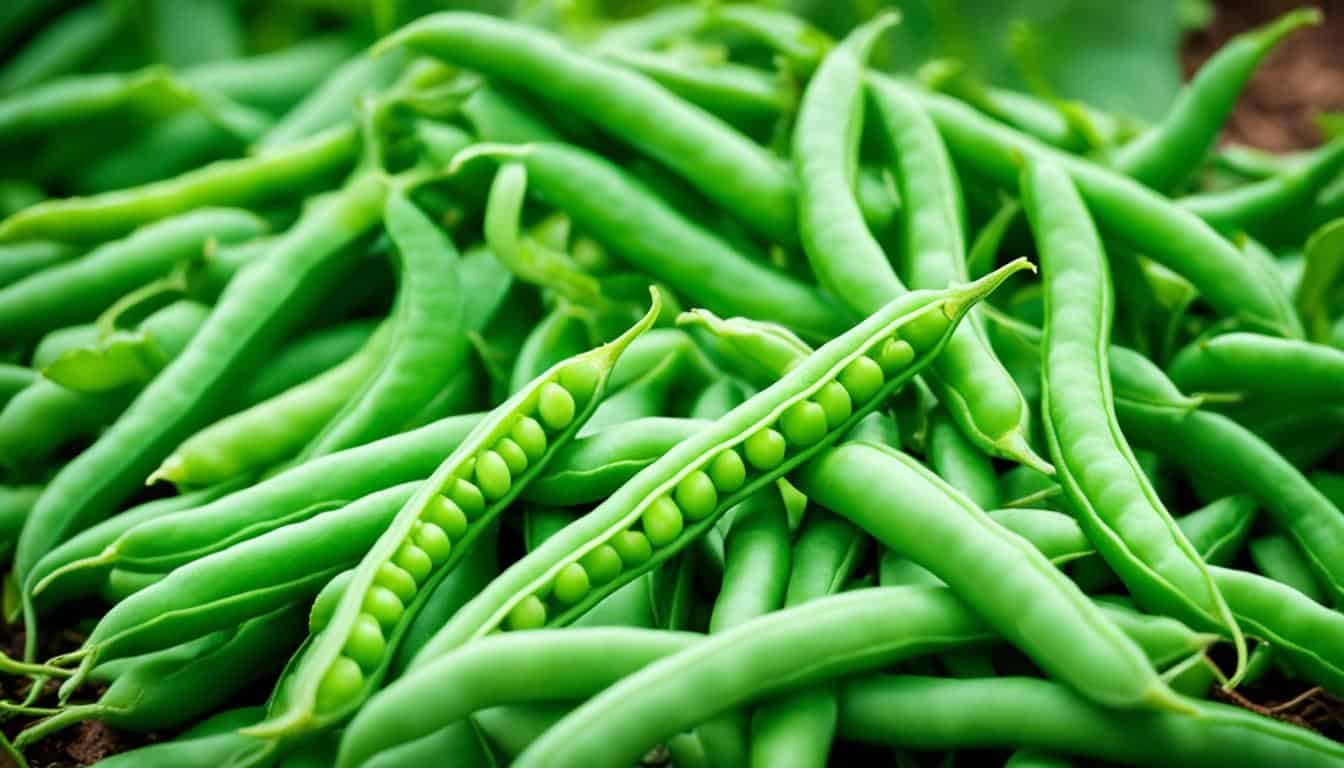
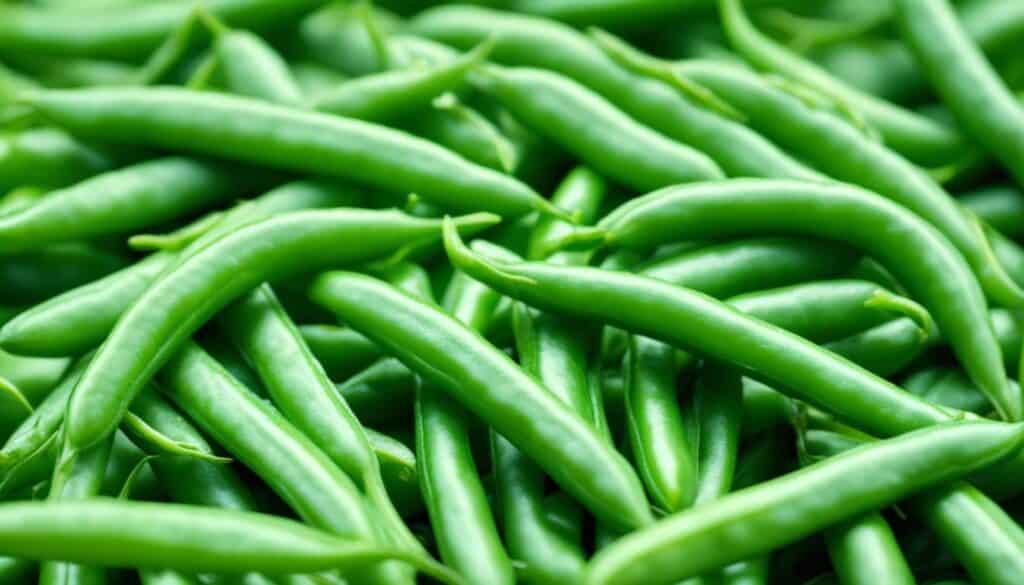
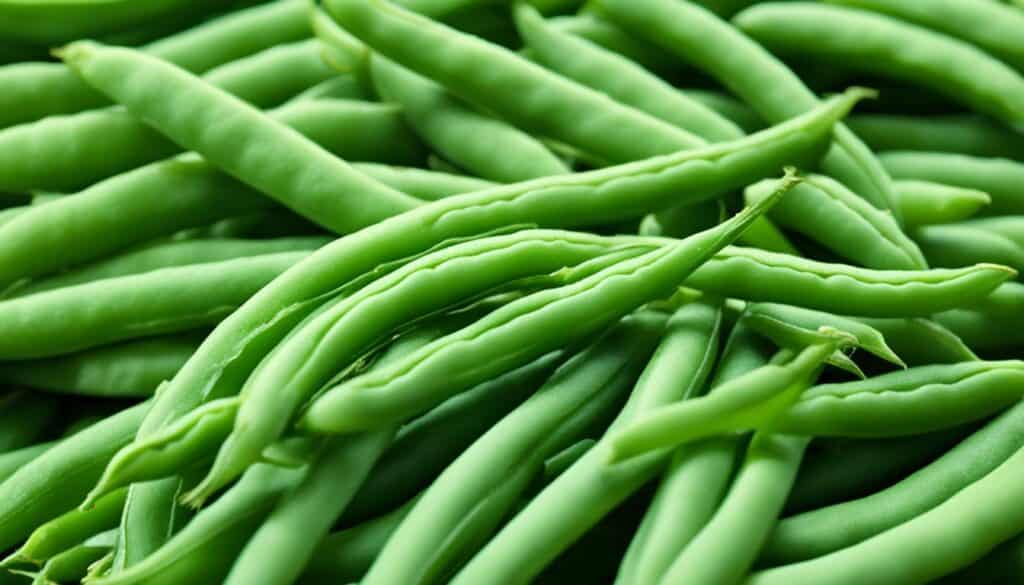
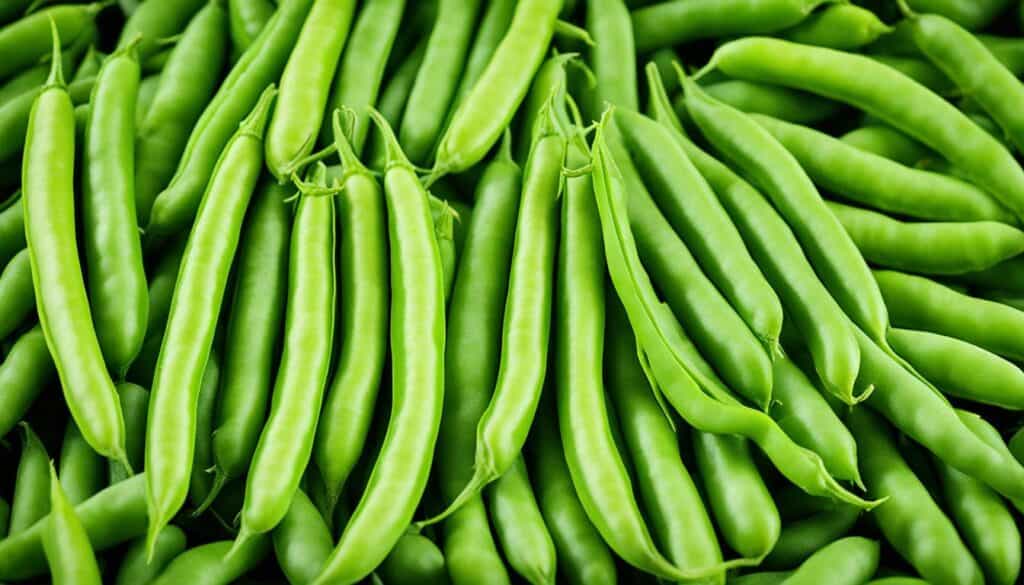

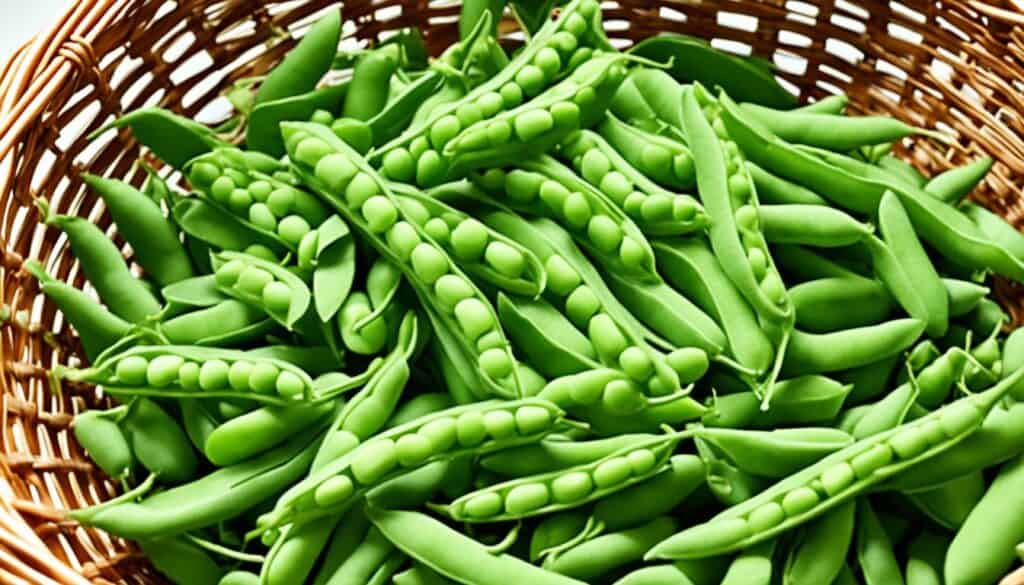



Leave a Reply